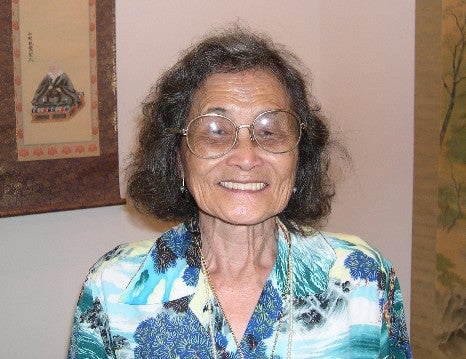The Oyama Family
At the turn of the twentieth century, the harsh conditions in rural Japan drove many Japanese laborers to seek a better life overseas. Among them was Tokujiro Oyama, a native of Fukuoka. In 1904, he left his hometown and boarded a boat headed for Mexico as a stowaway. After arriving in Veracruz, he spent eight years trekking through Mexico’s mountains and forests, eating plants and nuts for survival and avoiding being deported back to Japan. It is said that Oyama ate so many bananas during these arduous years that he refused to eat them again until the 1960s.
Eventually, Oyama arrived at Eagle Press, Texas, and continued to San Francisco to meet his arranged bride, Taki Mizukami, who was roughly 17 years old at the time. The couple married on December 12, 1912, and made a living doing odd jobs in the agricultural sector in San Pedro, California. Their first son, Takeo, was born in 1914, and their second, Sigenore (Siggie), in 1918.
In 1919, a family friend convinced the Oyamas to come to San Benito, Texas, calling it “the land of opportunity.” The family followed this advice and boarded a train to San Benito, arriving at the most remote and dissapointing land they had ever seen. The friend who had encouraged them to move later disappeared, and with their meager possessions and lack of options, the Oyamas decided to settle in San Benito.
With perserverance, they built a successful farm. Their third child, Georgie, was born in 1921. Their fourth, Mary, whose notes this article is based on, was born in 1926. Mary recalls that she was only 2.5 pounds at birth. The doctor, who had ridden his horse through the mud to attend the birth, ordered that Mary be placed in a shoe box with warm bottles surrounding it as an incubator.
The Oyama farm did not go without hardship. During the Great Depression, Tokujiro lost the little savings that he had put into a bank that went bankrupt. Still, the family persevered with their farming. Mary recalls that most of the laborers that her father hired were illegal immigrants from Mexico, and she remembers them to be loyal and hardworking. As the Depression came to an end, the Oyamas were able to enjoy life more freely. In 1939, they took a road trip to the San Francisco World’s Fair, a trip that Mary remembers with great excitement as she got to see life outside of rural Texas and meet other Japanese people.
The Oyamas were loved and respected in the community. Tokujiro became known as the “Red Potato King,” and his lawyer and businessmen friends kept the family out of interncamps during the World War II period. Though the FBI searched their household four times, they never found anything suspicious. Mary remembers that she had to stay still and quiet during these searches, which she could easily do as a well-disciplined child. Meanwhile, Siggie and George served in the army. George, who was awarded the Bronze Medal, was particularly scarred by the war and suffered from nightmares even after his discharge.

The Oyama family was also active in the Japanese American community in the Valley. They were active participants of the Rio Grande Valley Royal Club, where local Japanese Americans got together and hosted events like picnics. Mary recalls eating healthily and heartily at these events, as well as her father carving sashimi and mixing and flipping the rice during mochi making. As Japanese Issei, Tokujiro and Taki eventually became American citizens after passing the citizenship test, and later, they were also able to go back to Japan after so many years. In 1974, 90-year-old Tokujiro was recognized by the Showa Emperor and awarded the Fifth Class Order of the Sacred Treasure for his dedication and hard work.
Tokujiro passed away in 1978, and Taki in 1979. As of 2020, the Oyama siblings – Takeo, Sigenore “Siggie,” George, and Mary – have also passed away. Their memory and legacy are carried on by their descendants and friends. According to Mary’s notes compiled in 2003, she felt very blessed and proud of her family’s accomplishments. Indeed, the story of the Oyama family in America, which began with Tokujiro’s hiding in a ship headed for Mexico and spending eight years living subsisting on plants and nuts, is truly a story of great hardship, great perserverance, and great success.
